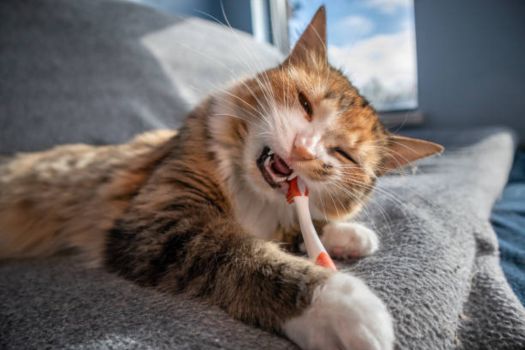Our Services
Pet Dentistry
It is important to have routine dental assessments of your pet’s teeth in order to plan the best strategies to control, treat and protect them from dental disease.

Pet Dentistry
Periodontal disease, also known as gum disease, affects more than 80% of pet cats and dogs. This makes it the most common disease to affect our pets. Periodontal disease is caused by plaque bacteria that build up on the teeth and can form hardened deposits called tartar. The plaque bacteria cause inflammation of the gum line (gingivitis), infection, and bone loss. Once it advances, gum disease can cause bad breath, drooling, discomfort while chewing, inflamed gums, and chronic pain.
It is important to have routine dental assessments of your pet’s teeth in order to plan the best strategies to control, treat and protect them from dental disease.
An oral examination consists of identifying these abnormalities by probing pockets around teeth, feeling if the teeth are mobile, and grading your pet’s teeth. This grading scale helps to assess the severity of the dental disease and also allows our veterinarians to plan the best treatment protocol needed.
Grade 0: No plaque or gingivitis present. Young, healthy dogs and cats between 6 and 12 months of age are often grade 0.
Grade 1: Mild gingivitis and plaque are present. A grade 1 condition is often reversible with brushing and appropriate chewing.
Grade 2: Mild to moderate tartar (mineralized plaque and bacteria) and gingivitis are present on multiple teeth. Gingivitis is usually reversible after professional scaling and polishing.
Grade 3: Heavy tartar and periodontal disease with bone loss are present. With grade 3 patients, oral pain is likely. Tooth lesions and fractures may be present under tartar.
Grade 4: Severe tartar, periodontal disease, and oral pain are present. With grade 4 patients, tooth loss is imminent.
Each of our prophylactic dental care plans includes pre-anesthetic bloodwork; this bloodwork allows your veterinarian to assess your pet’s overall health, ensuring that your pet is a good candidate for anesthesia. If pre-anesthetic bloodwork shows any abnormalities, these abnormalities can be addressed by making any necessary adjustments to your pet’s treatment plan.
During your pet’s dental procedure, they are placed under general anesthesia, and if necessary dental radiographs (x-rays) are performed. An extensive examination of individual teeth is performed for mobility and fractures; it is possible that a more advanced dental procedure may be identified. The final stage is the removal of plaque and tartar using hand instruments and power scaling equipment and giving your pet’s teeth a thorough ultrasonic cleaning and polishing.
We at The Pets I Love Veterinary Hospital emphasize preventative dental care in an effort to maintain oral health and decrease the prevalence of the periodontal disease.
For more information on our dentistry services or to schedule your pet for a dental exam or dental procedure, please call us at 845-395-9200.
